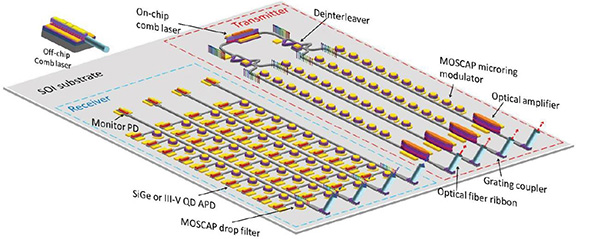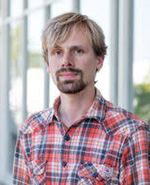 |
||
Home > TERATEC FORUM > Workshops > Workshop 6
TERATEC 2025 Forum |
|
Components and increasing performances of HPC systems: effervescence, divergence, convergence
Chaired by Marc Duranton, Research Fellow, CEA
and Denis Dutoit, Program Manager,Advanced Computing, CEA
Silicon photonics for AI - the good, the bad and the ugly
By Thomas Van Vaerenbergh, Photonics Research Engineer, HPE labs
 |
Recent research shows that silicon photonics can not only be used to produce low-latency, energy-efficient and high-throughput interconnects in datacom or High Performance Computing (HPC) systems, but can also be used to design optical accelerators tailored to AI workloads. In this talk, we will first identify the opportunities for light-enabled analog computing on integrated photonic chips and compare such accelerators with other emerging accelerators. Next, we will point out the most important bottlenecks that still need to be addressed to enable deployment of such optical accelerators for industrially relevant AI applications. We will conclude the talk by discussing some of Hewlett Packard Labs’ recent work in addressing these challenges, including techniques to reduce the size of optical circuits that are emulating matrix-vector multiplications, as well as the development of a system-level simulator for photonic accelerators, providing a detailed understanding of the energy and speed advantages of different optical micro-architecture designs.
 |
Biography: Thomas Van Vaerenbergh received the master's degree in applied physics and the Ph.D. degree in photonics from Ghent University, Ghent, Belgium, in 2010 and 2014, respectively. He was awarded the scientific prize Alcatel-Lucent Bell/FWO for his PhD thesis on all-optical spiking neurons in silicon photonics. In 2014, he joined the Large-Scale Integrated Photonics team in Hewlett Packard Labs, part of Hewlett Packard Enterprise (HPE), in Palo Alto, California. Since 2019, he is based in HPE Belgium and has been expanding HPE’s research activities related to photonics and AI in the EMEA region. His main research interests include analog photonic and electronic accelerators for combinatorial optimization and AI workloads, and inverse design of photonic devices and circuits based on physics-informed machine learning. His team is working on 4 EU projects related to neuromorphic photonics (NEUROPULS, GATEPOST, SPIKEPro and Q-ONE) and one DARPA-funded project (QuICC) related to optimization accelerators based on analog electronics. |